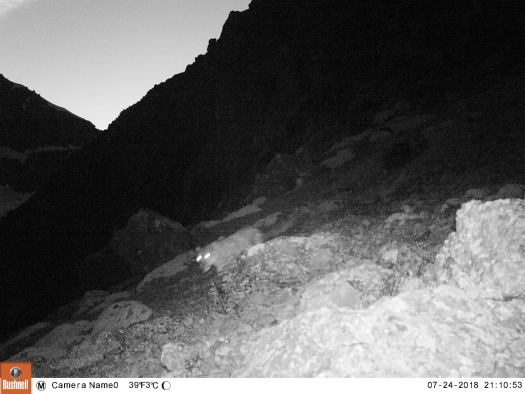July 9 to 21 2018. Tien Shan Mountains, Kyrgyzstan. Well sooner or later the Snow Leopard expedition had to end; I’d spent the best part of two weeks in an extraordinary place, sensational really. We did not see a Snow Leopard; we hadn’t expected to. From the outset we were told our chances were virtually zero, they’re so rare, so secretive, and, other than a mother with cub, solitary. Our task was to look for evidence of the presence of Snow Leopards, signs such as prey species, footprints and scat.
Our teams’ many days of work paid off though, one team found footprints of a leopard mother and cub, expedition scientist, Dr. Volodyar Tytar, interviewed a herder and accepted as credible his report of finding the body of a cub high up the head of a valley, and best of all, one of our camera traps took a picture of a Snow Leopard, the first in five years; here it is.

And about the birding… well it wasn’t a particularly good birding place notwithstanding my seeing a handful of rather thrilling birds; it’s just not a birding hot-spot. I think the expedition as a whole recorded about 30 bird species. Complicating matters was the time of year, probably half the sightings were of newly fledged young, and fledglings can be challenging because so many of them are just little brown jobs. Given fleeting views, a young Isabelline Wheatear is indistinguishable from a Northern Wheatear and at times might just as easily be an Altai Accentor. But then, I wasn’t there for the birds.
And if this sort of expedition is for you, or a really thrilling wildlife citizen science project sounds appealing, check out Biosphere Expeditions website. Set aside plenty of time to explore the site, it holds some very out of the ordinary opportunities.